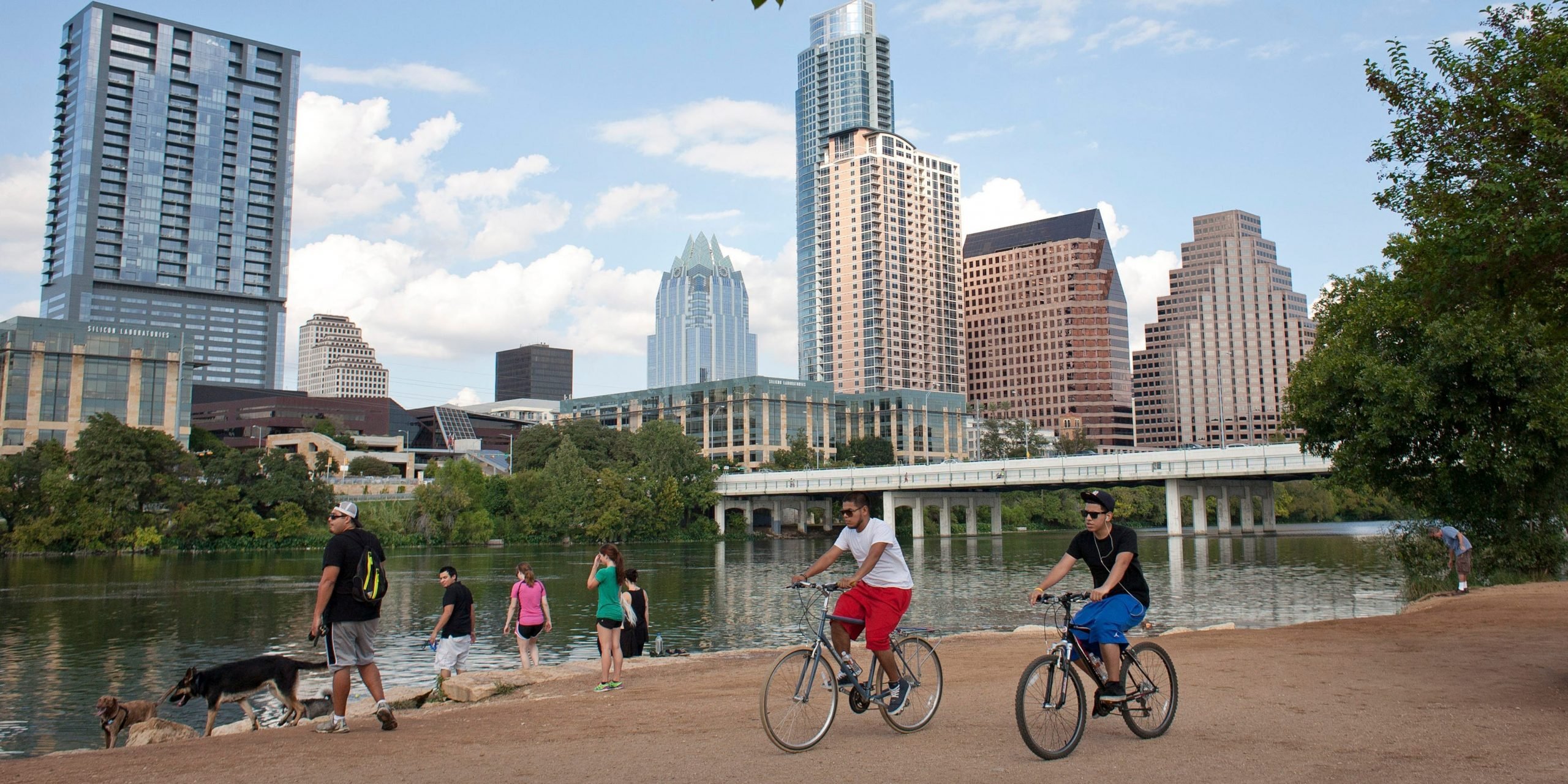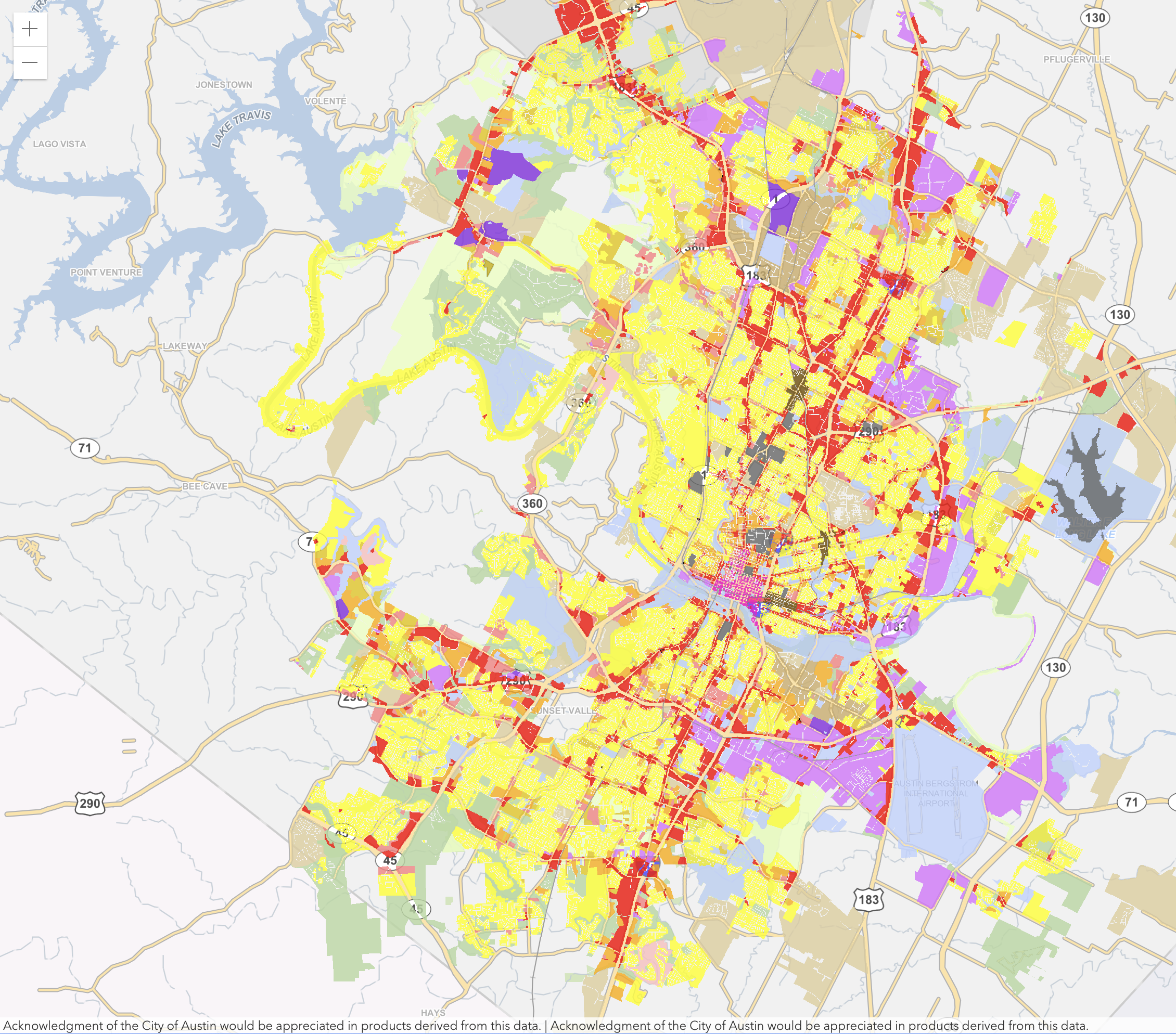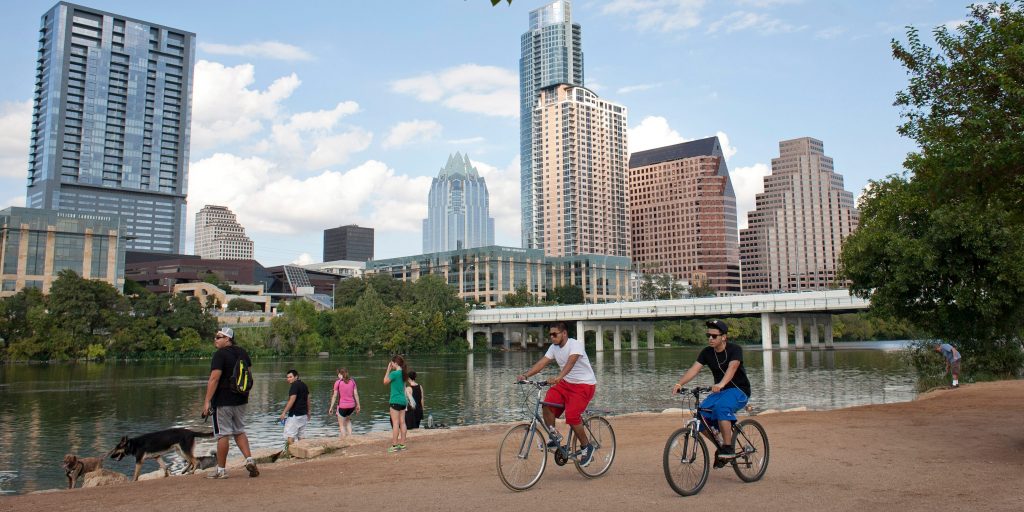
- Austin's residential zoning pits pro-housing millennials against "not in my backyard" boomers.
- Younger YIMBYs are pushing to boost affordability in a city where most zoning is single-family only.
- It's frozen in court, meaning prices keep soaring — and the NIMBY boomers are winning.
In Austin, Texas, a battle is brewing over residential zoning and affordable housing.
As people flocked to the Texas metropolis over the last 10 years, decades-old zoning laws pit older homeowners against millennial movers. Though the city is in the process of rewriting its laws, that process is meeting with resistance from the older, largely boomer crowd of city politicians that have zoned most of the city to be single-family-only. Their continued resistance could threaten the affordability of Austin housing — and it's already turning the city into the south's San Francisco.
Home inflation over the last year has been the city's fastest since 1984, and The New York Times reported Saturday that by some metrics, it's now one of the least affordable cities in the country. The affordability pressure has intensified a debate over the city's zoning code. Whether officials overhaul the laws or not could be a harbinger for how home shortages are addressed in other cities.
The slow pace of homebuilding in 2021 has bolstered the pro-housing YIMBY — "yes in my backyard" — movement and its calls to allow for denser residential zoning. By building more units on restricted lots, they argue, the city can maintain its layout while still fighting the unit shortage.
But the NIMBY movement — largely comprised of "not in my backyard" baby boomers — has fought to maintain the status quo and protect housing values. The group has staunchly defended single-family zoning laws, which relegate parcels of land to individual housing units.
The factions' disagreements are coming to a head in Austin where restrictive zoning measures are crimping home supply. With millennials in their peak homebuying years, the zoning laws risk leaving property ownership out of reach for an entire generation.

The map on the left shows just how pervasive single-family zoning is in Austin. All the yellow-highlighted areas host either "very low," "low," or "low-medium" density residential lots, according to the city's current zoning code. Most of those lots only allow for a single residential unit on them.
It shows a big reason why Austin is unaffordable: it's currently illegal to build more affordable housing in most of the city.
It's good news, then, that the city government is currently rewriting its zoning laws. The effort, known as the Land Development Code Revision, aims to revamp many single-family-zoned areas to include duplexes and other options for increased density.
The code revision has become a hotbed for conflict between NIMBYs and YIMBYs, though. A group of residents has stalled the rewrite by suing the city, arguing the government didn't adequately warn property owners who will be affected by the changes. An appeals court heard both sides of the argument earlier in November.
The battle may be on pause, but recent developments suggest YIMBYs could notch a major win from the revision. California Gov. Gavin Newsom in September signed a law that allows the construction of two-unit buildings on lots previously zoned for only single-family homes, effectively outlawing single-family zoning throughout the state.
On the other side of the country, New York City's likely mayor Eric Adams invoked the YIMBY movement in a New York Times podcast when he suggested the most expensive neighborhoods in the city should be upzoned to prop up housing affordability.
"We need to look at those sacred cows like SoHo and other parts of the city where we used these methods to keep out groups. We must all share the affordable housing crisis," Adams said.
Neither NIMBY nor YIMBY has won the war over Austin's zoning overhaul. Yet as cities face more pressure to put housing within millennials' reach, the pro-housing movement has been quickly gaining traction.

